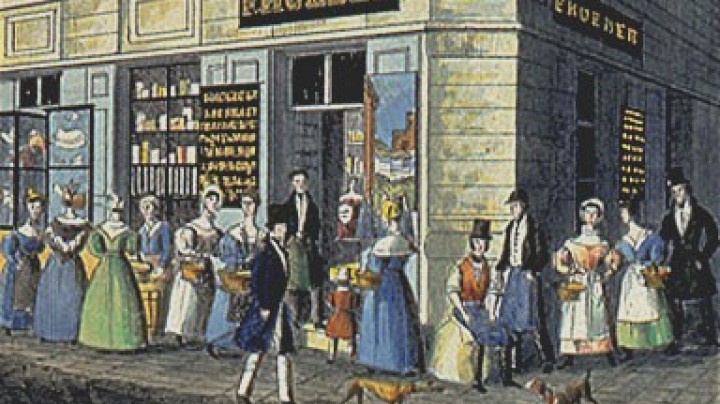Of markets and fairs – and their importance for trade
Markets and fairs were the centres of commercial life in the early modern period. Traders travelled to them from all over Europe in order to offer their wares, for example to Linz.
For the parts of Austria along the Danube it was especially the markets held in Krems and Linz that were of more than just regional importance in terms of the interest and the number of visitors that they attracted. The markets held in Freistadt in the north of Upper Austria were important for trade with Bohemia. In addition there were any number of small weekly markets and annual fairs that were important for regional trade.
In the sixteenth century the markets held in Linz, which can be traced back to the thirteenth century, were among the largest in the Holy Roman Empire. The bridge across the Danube there, built under Maximilian I at the turn of the fifteenth to the sixteenth century, had a considerable impact, as it was one of just three bridges across the river between Vienna and Linz. Fairs were organized around fixed holidays and lasted several weeks: St Bartholemew’s Fair in Linz lasted four weeks and was held around the saint’s day on 24 August, while the town’s other big market, the Easter Fair, lasted for a fortnight. The goods offered at them included skins, honey, salt, wine, grain and iron, though the largest turnover was made with cloth.
Most of the traders came from the surrounding area and not so distant provinces such as Styria, Carinthia, Carniola, Hungary, Poland, Silesia, Moravia and Bohemia, though they also came from as far away as Italy, France and Spain. It was in the middle of the sixteenth century that the turnover of goods at the fairs held in Linz reached its peak. In 1566 some 211,000 metres of cloth was sold at just one of the fairs, while in 1593 the total turnover of the two fairs amounted to some four million gulden. They even supplied cloth and silver tableware to the Habsburg Courts in Vienna, Graz and Innsbruck. The fairs were important not only for the trade in goods but also as centres of finance and loan transactions in Central Europe.















